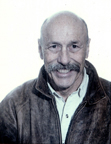Quantum Entanglement, a conjecture
“Intriguingly, recent work has demonstrated that light absorbing molecules in some photosynthetic proteins capture and transfer energy according to quantum-mechanical probability laws instead of classical laws at temperatures up to 180 K.”[2]
This paper and a most readable summary,[3] suggest a completely new level of biological mechanisms on a whole new level of reality – a quantum leap, if you will, into a yet smaller world of particle physics.
“There are more things in Heaven and Earth Horatio than are dreamt of in your philosophy.”[4]
There seems a growing suspicion that quantum-mechanical mischief plays a role in many if not all living things. These features, however, are on so small a scale and so poorly understood that the quantum phenomena do not yet met the eye.
Medicine today struggles with translating a new found physiology on the molecular scale. The breakthrough comes from the advances in genetics and from microscopy at the atomic level. Quantum mechanics, on the other hand, may be present on a larger scale, but becomes evident only at the particle level -- where particle behavior becomes strange indeed.
Entanglement for instance, involves particles behaving identically at a distance. Efforts are under way to develop computer applications based on this phenomena of quantum entanglement. Einstein called the theory “spooky behavior at a distance” and was skeptical because it defied the laws of relativity. Experimental evidence today, however, makes entanglement a proven reality. Quantum mechanics is not yet reconciled with classical physics, nor is it yet a consideration in bio-medicine.
As a analogy, one might imagine a party of 7 girls who in the course of the evening before school is out become entangled in a metaphysical sense. In the morning, they leave school traveling home to many parts of the country. In the course of a subsequent evening one of the girls experiences an ecstatic moment. Simultaneously and instantaneously, the others experience the same – spooky indeed. However, the analogy is more complicated. Each girl might find herself spinning around in one direction or the other, but always in the same direction. Observing these girls might determine their location or their direction but not both at the same time. (About sums up my experience with the opposite sex) In observing which foot the girl was standing on, it would only be possible to offer a statistical probability. However, this is only an analogy. Entanglement occures among electrons and protons. (Never mind Shrödinger’s cat.[5])
What intrigues me with this phenomena, is the conjecture that quantum-entanglement mayplay a role in the infinity of things that we do not yet and perhaps never will understand about our own biology.
Probing what we know, despite its considerable substance, hardly scratches the surface of the vast dark infinite depth of the unknown. Biomedicine has yet to explain sleep. We cannot explain scanning logic, intuition or even the metaphor that over shadows our stilted attempts at artificial intelligence.
The Golden Plover chicks find their way from Alaska to the Fiji Islands weeks after their parents leave for the long flight south. How do hundreds of shore birds all turn instantaneously in perfect formation? One might consider this spookey behavior at a distance.
I think that the next frontier in medicine will be a quantum leap deeper into the infinitesimal -- exploring quantum entanglement at the particle level as a part of our physiology.
[1] Collini, Wong, Wilk, Curmi, Brumer and Scholes – Dep. Of Chem. Inst. for Optical Sci. and Center for Quantum Information, Univ. of Toronto, Physics and Med. Research U. of South Wales, Dep. Science and Chemistry U. of Padova, Italy
[2] Nature 463, p644, 4 Feb. 2010
[3] Photosynthesis, p614 by Grondelle and Novoderezhkin, same issue
[4] Shakespeare, “Hamlet” act I scene V
[5] Schrödinger http://en.wikipedia.org/wiki/Schr%C3%B6dinger's_cat


0 Comments:
Post a Comment
<< Home